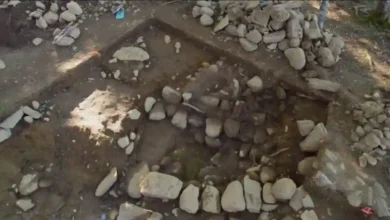The Curse of Oak Island: Top 3 WILDEST Treasure Theories
The Curse of Oak Island: Top 3 WILDEST Treasure Theories

For 228 years, treasure hunters have been chasing clues, piecing together fragments of history, and unearthing enigmatic artifacts on Oak Island, Nova Scotia, Canada. The question remains: what lies buried on this mysterious island? As we gear up for Season 11 of The Curse of Oak Island, brothers Rick and Marty Lagina, alongside their dedicated team, will be delving deeper into the island’s secrets than ever before. But what are the origins of this perplexing mystery, and who might be behind it?
Tonight, we’re unraveling the most intricate theories that attempt to uncover not just the identity of those who may have hidden the treasure but also the nature of the treasure itself. From Christopher Columbus and his connection to the Ark of the Covenant to the Portuguese Knights Templar and their secretive construction, we’ll explore the most compelling cases that could hold the key to Oak Island’s elusive prize.
Theory 3: The Christopher Columbus Theory
In 2015, researcher Jeff Irving presented a theory that Christopher Columbus might be linked to the treasure on Oak Island. Irving suggested that Columbus, whose mission in 1492 was funded by the Spanish Crown, had connections to the Knights Templar through his wife’s family. His ships, adorned with the Portuguese Templar cross, could have carried a priceless artifact like the Ark of the Covenant. This theory gained traction in 2020 when a boot heel discovered in the Money Pit area was carbon-dated to the 15th century, potentially placing Columbus himself at the scene.
Theory 2: The Military Order of Christ Theory
The Military Order of Christ Theory suggests that the Portuguese, active in Nova Scotia from the early 16th century, might have had a hand in the island’s mysteries. The discovery of a Roman-style road in the swamp, along with cannon metal and stone shots, points to Portuguese origins. In 2021, the team visited Portugal and found striking similarities between Oak Island’s features and Portuguese medieval sites, suggesting a connection to the Order of Christ, a successor to the Knights Templar.
Theory 1: The Knights Templar Theory
In 2016, Zena Halper presented a theory linking the Knights Templar to Oak Island. She referenced maps and ciphers indicating Templar voyages to Nova Scotia in the 12th and 14th centuries. Halper’s research connected the island to Templar treasures hidden after the order’s disbandment. Key discoveries, including a stone-paved feature and a 14th-century lead cross found on Smith’s Cove, align with her theory. These findings suggest that the Templars may have hidden their treasures on Oak Island, leaving behind clues that have intrigued treasure hunters for centuries.
Join us as we delve into these theories, exploring the hidden history and potential truths of Oak Island’s enduring mystery.








